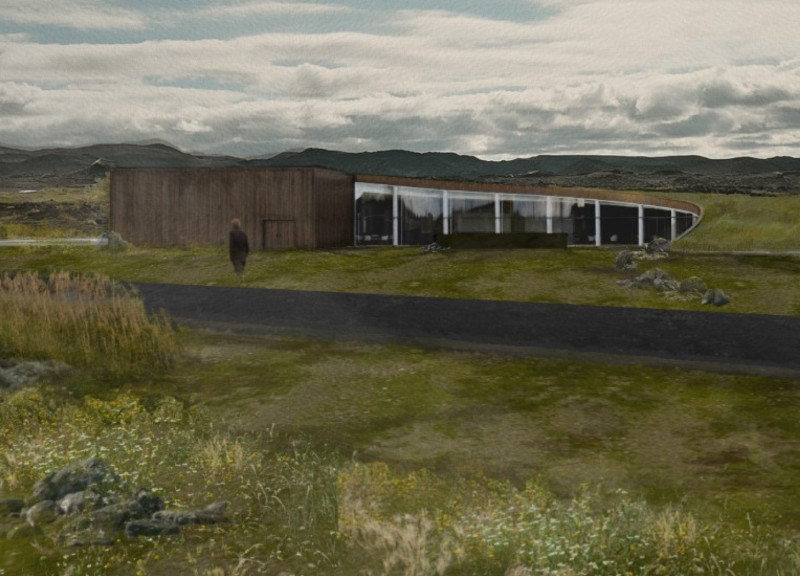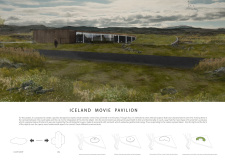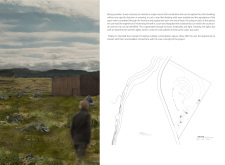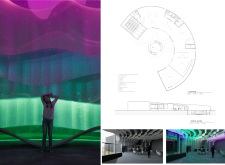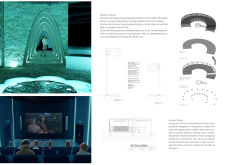5 key facts about this project
The Iceland Movie Pavilion is located in the heart of Iceland and serves as a tribute to the accomplishments of Icelandic cinema. Its design reflects the natural beauty of the surrounding landscape while creating a space for engagement and reflection. By merging elements of the countryside with urban influences, the pavilion invites visitors to explore and appreciate Iceland's cultural identity through film.
Architectural Concept
The concept behind the pavilion is rooted in the contrast between rural and urban experiences in Iceland. Its design takes inspiration from the region's volcanic geology, resulting in a building shape that echoes these natural forms. This connection to the land highlights the significance of Iceland’s environment in shaping its cinematic narrative, creating an architecture that feels at home in its setting.
Spatial Configuration
Inside the pavilion, the layout is open and inviting, allowing for fluid movement throughout the space. Without the presence of dividing walls, users can freely explore various areas. The distinction between spaces is achieved through strategic placements of furniture and equipment. This design choice creates a sense of continuity and encourages interaction among visitors, resembling the experience of walking through a cave.
Lighting Design
Lighting plays an essential role in establishing the pavilion's atmosphere. It is designed to mimic the natural phenomenon of the northern lights, creating dynamic conditions within the space. As the light shifts throughout the day, it enhances the aesthetic environment and enriches the experience for those inside. This thoughtful approach to illumination encourages visitors to engage with the space on multiple levels.
Material Consideration
The materials chosen for the pavilion reflect an understanding of both sustainability and local tradition. Wooden structures and sod roofs are employed, echoing the architectural practices of Iceland. This connection to tradition not only shows respect for the local heritage but also responds to the specific climatic conditions of the region.
The design integrates elements of light, space, and materials, crafting an environment that resonates with the cultural narrative of Icelandic cinema while remaining connected to the natural landscape.


